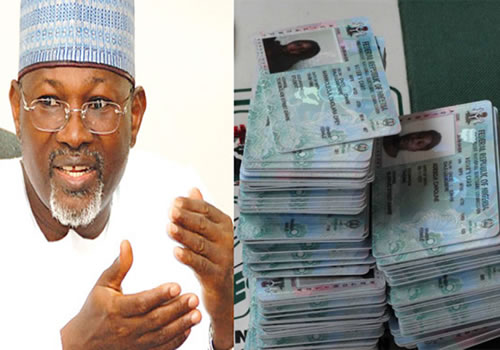–
Question 1: Why use Card Readers?
Answer: For the first time in Nigeria’s electoral history, electronic voter authentication system, with the aid of smart card readers, is being deployed for the 2015 general elections. Using Card Readers has enormous advantages, which include:
- Once configured, the Card Reader can only read Permanent Voter Cards (PVCs) issued by the Independent National Electoral Commission (INEC). Any person that shows up at the polling unit without a PVC or with a card not issued by INEC will not be able to vote.
- The Card Reader reads the embedded chip on the PVC, not the barcode, and it shares a secret code with the PVC; thus it is impossible to falsify the cards.
- The Card Reader authenticates the identity of the voter by cross-matching his/her fingerprints with that stored on the embedded chip. No person can vote using another person’s PVC.
- The Card reader keeps a tally of all cards read, comprising the details of all voters verified as well as those not verified, and transmits the collected information to a central INEC server via GSM data service.
- Information transmitted to the server will enable INEC to audit results from polling units, as well as do a range of statistical analysis of the demographics of voting.
- Collation officers will also be able to use information transmitted by the Card Reader to audit polling unit result sheets and determine whether accreditation figures have been altered.
Question 2: Is the usage of Card Readers for 2015 elections legal?
Answer: The use of the Card Reader for the purpose of accreditation of voters is one of the innovations introduced by the Commission to improve the integrity of the electoral process. It does not violate the Electoral Act 2010, as Amended, or the 1999 Constitution of the Federal Republic of Nigeria, as Amended. It adds value to the process in line with the yearnings of Nigerians for credible elections, and accords with international best practices. Whereas the Electoral Act prohibits the use of electronic voting, the Card Reader is not a voting machine and is not used for voting. The Card Reader is used only for accreditation of voters, and only accreditation (and not voting) data is transmitted by it.
Question 3: How does the Card Reader work?
Answer: The Card Reader uses a highly secure cryptographic technology that is used commonly in devices that need to perform secure transactions, such as paying terminals. It has ultra-low power consumption, with a single core frequency of 1.2GHz and an Android 4.2.2. Operating System. The INEC staff operating the Card Reader will scan the PVC of each voter to verify its genuiness before allowing the voter to get accredited. It takes an average of 10 to 20 seconds to authenticate a voter.
Question 4: How long is the battery life of the Card Reader?
Answer: The Card reader has a 3200mAh battery, which can lasts for about 12 hours in continual usage when fully charged. The device hibernates when not in use to save and lengthen the battery life.
Question 5: Who operates the Card Reader at the Polling Unit?
Answer: An Assistant Presiding Officer (APO) at the polling unit has the responsibility to operate the Card Reader. Poll officials that will operate the Card Readers have received extensive hands-on training and are well equipped to handle the task. The Commission has also painstakingly outlined the operational procedures in its ‘Approved Guidelines and Regulations for the Conduct of 2015 General Elections’.
Question 6: Have the Card Readers been tested ahead of the 2015 general elections?
Answer: The Card Reader units have been broadly subjected to simulation Quality Assurance, Integrity and Functionality tests and INEC has full confidence in their performance for election purposes. The device has also been subjected to Performance and Conformance Test, both locally and in Texas, United States, laboratories by the Radio Frequency Identification (RFID) Research Centre and found to be of the highest quality grade. Besides all these, and with additional time resulting from the rescheduling of the 2015 general elections, the Commission has directed that Stress Test be conducted on the Card Reader device in mock election scenarios – two states in each of the six geo-political zones – ahead of the new election dates. (Details of this exercise will be unveiled by the Commission next week.)
Question 7: Can the Card Reader fail to function?
Answer: Going by the results of tests already conducted, it is highly unlikely that the Card Reader will fail on Election Day. Still, INEC has drawn up serial intervention plans in the unlikely event of the Card Readers failing.
- Should there be a challenge with battery power for the device, the Commission has procured more than 35,000 back-up batteries that can be rapidly deployed.
- If the device itself fails in the course of accreditation, the Commission has procured more than 26,000 spares that can be rapidly deployed in replacement within the scheduled accreditation hours of 8a.m. – 1p.m. Whatever time is lost on these scheduled hours in the course of replacement will be added and accreditation extended beyond 1p.m. to compensate for the lost time.
- In the extremely unlikely and isolated event that a faulty Card Reader can’t be replaced within the scheduled accreditation hours, INEC has come to a firm agreement with political parties that the exercise be repeated the following day rather than revert to manual accreditation.
These procedures, which registered political parties have agreed to, have been written into the ‘Approved Guidelines and Regulations for the Conduct of 2015 General Elections’.
Question 8: What if the Card Reader verifies a voter’s PVC but his/her fingerprints cannot be authenticated?
Answer: The Commission has come to an agreement with registered political parties on what to do: namely that if a voter’s PVC has been read and it is evident that he/she is the legitimate holder of the card, but the fingerprints cannot be authenticated (or he/she doesn’t have fingers), the Presiding Officer of the voting point will complete an incident form and the voter will be accredited to vote. Party Agents and Observers would be there to witness to this.
Question 9: Is it possible to accredit all voters who turn out within the stipulated hours for accreditation using the Card Reader?
Answer: The accreditation of a voter, using the Card Reader, is estimated to last an average of 10 to 20 seconds per voter. Even if we double this time to 20 to 45 seconds for planning purposes, and working on the basis of a maximum of 750 voters per voting point, and using a generous projection of 70% voter turnout (the average being 54% from past elections), which equates to 525 voters, the card reader will need 6.5hours to process all the voters. This is well within the operating time for the elections as well as the battery life of the Card reader.
Question 10: How is the Card Reader programmed?
Answer: To prevent fraudulent use, the Card Rader is configured to work only on Election Days. In addition, the device is configured to specific polling units and cannot be used elsewhere without requiring reconfiguration by authorised INEC personnel.
Question 11: How has the INEC’s Card Reader addressed the problems experienced in other countries in the sub-region?
Answer: The challenge with a few of the Card Reader devices in Ghana, for instance, during the country’s 2012 general elections was the battery power, apparently because the affected devices were not fully charged. It was in learning from this experience that INEC designed the Card Readers to be used in the 2015 elections with 12-hour battery life in active usage, and also procured more than 35,000 units of back-up batteries. The imperative of adequate charging of the Card Readers is underscored during the trainings of election personnel.
The supposed technology failures during Kenya’s general elections in 2013 had nothing to do with card readers, as the country used computer poll books for accreditation. The challenge was rather with the electronic system used in transmitting results, and not card readers.




